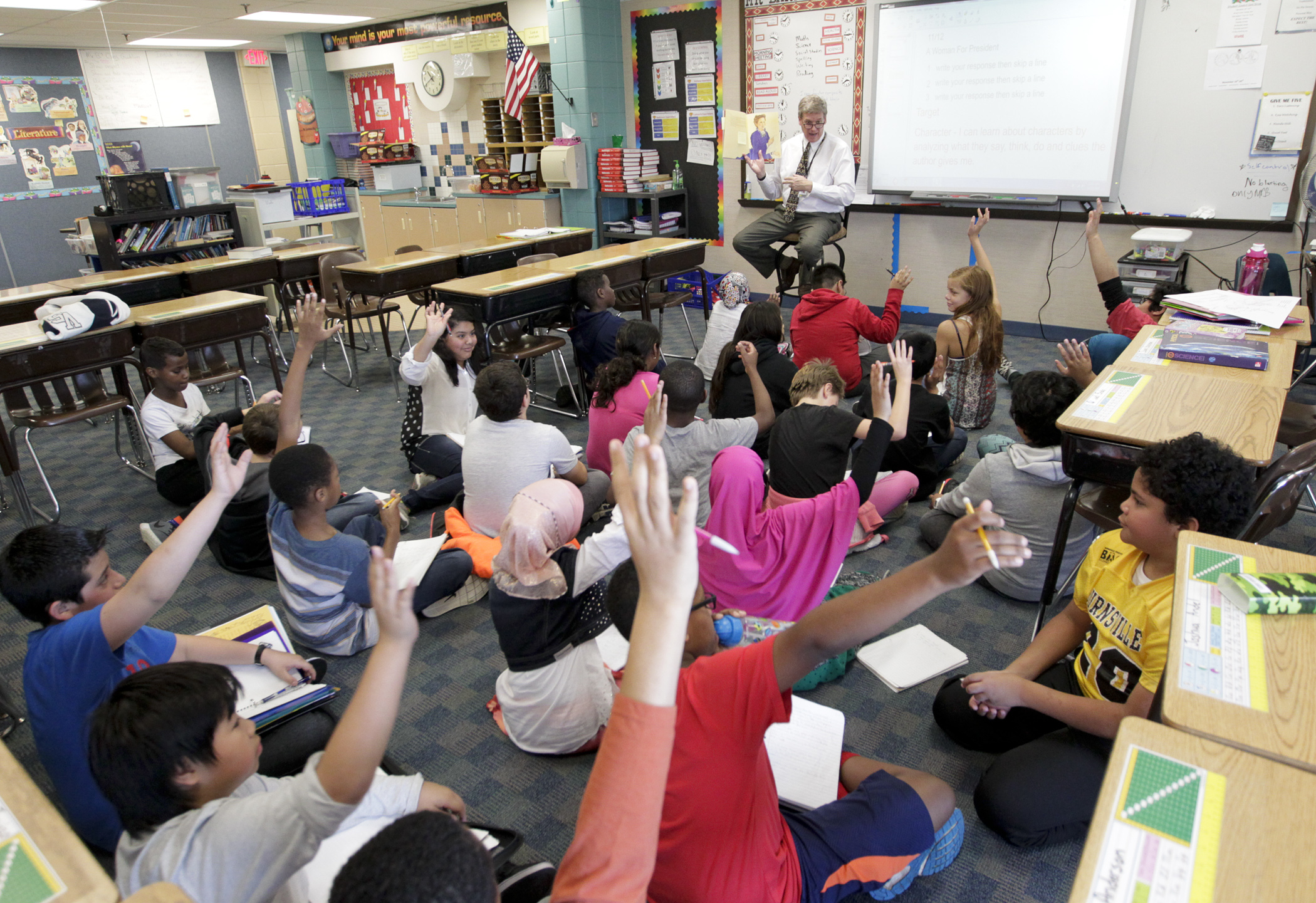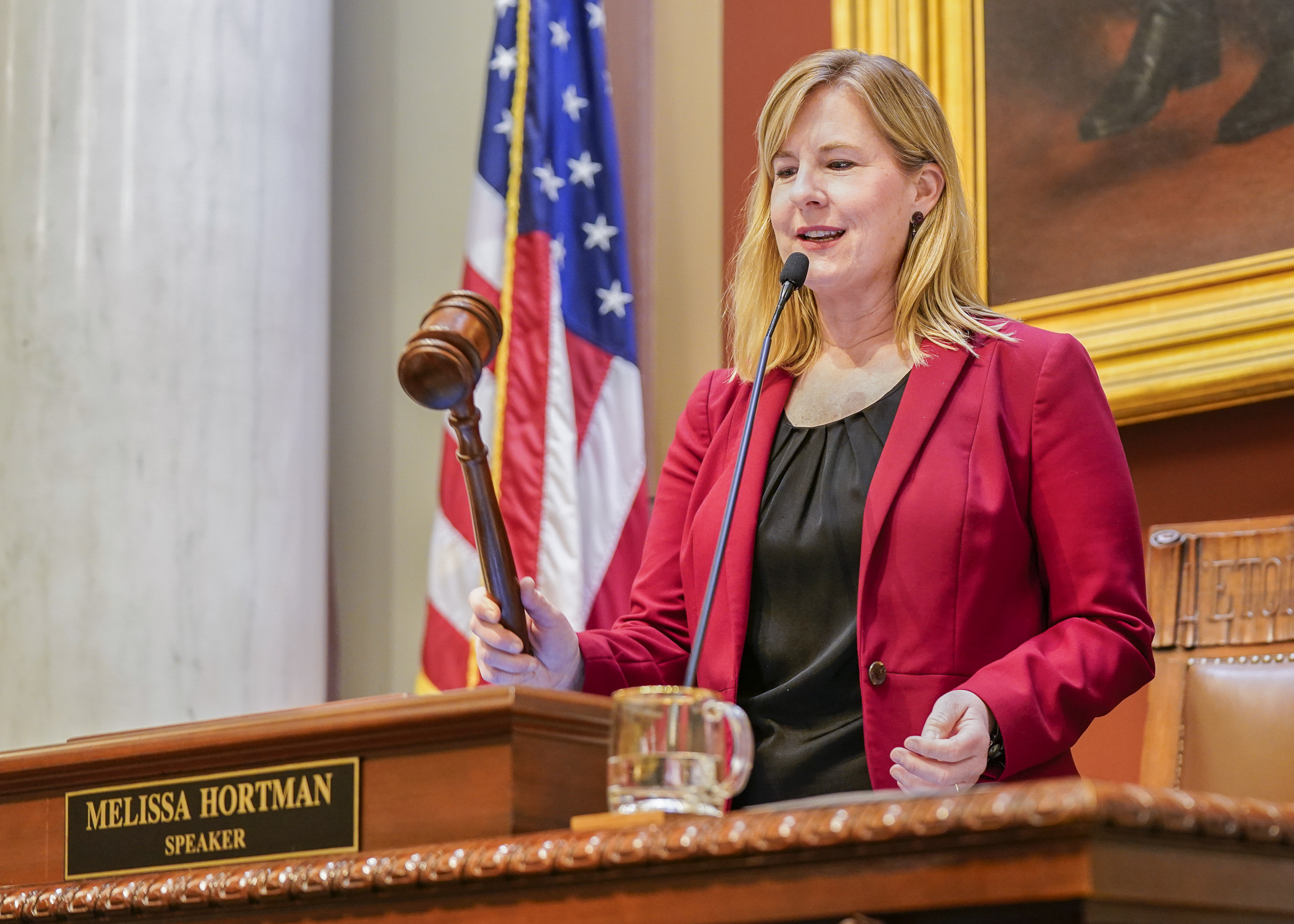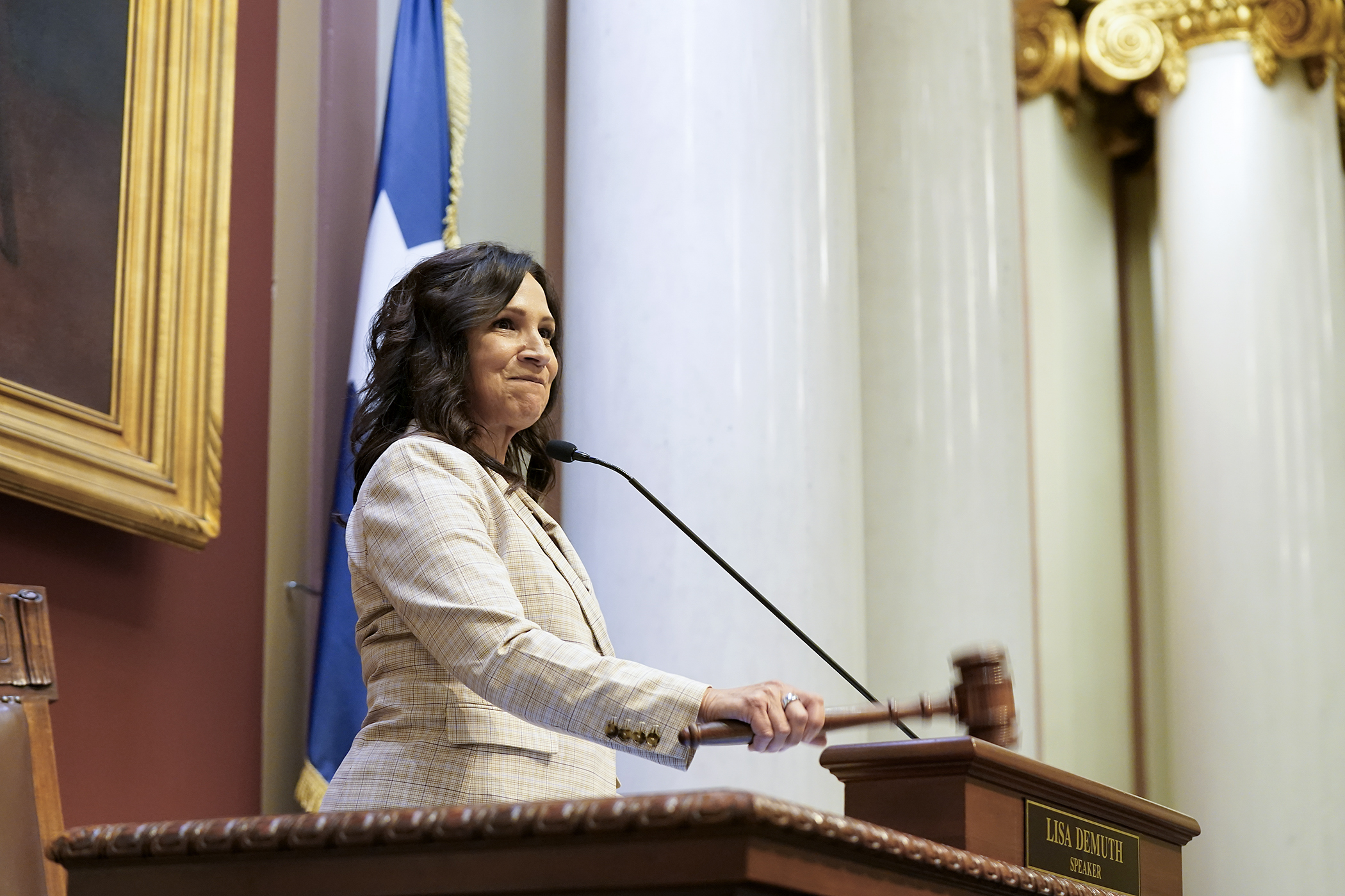Education bill brings disparate proposals together, heads for House Floor

The chasm has closed. The yawning gap in E-12 education funding found in the omnibus bills that passed the House and Senate last month is no more, as middle ground has been found and more controversial proposals jettisoned.
After being replaced by a delete-all amendment and approved by the House Ways and Means Committee Wednesday on an 18-10 party-line vote, SSHF2 was presented to the House Education Finance Committee Thursday morning at an informational hearing. Sponsored by Rep. Jim Davnie (DFL-Mpls), it is now on its way to the House Floor.
Its companion is SSSF23, sponsored by Sen. Roger Chamberlain (R-Lino Lakes).
In early May, the House passed a bill with $772.6 million in new spending over the next biennium, its $21.2 billion total including nearly $400 million to increase the general education per-pupil formula by 2% each fiscal year.
Meanwhile, the Senate’s $20.6 billion bill included only $152.1 million in new spending and no increase in the per-pupil formula. Clearly, they needed to talk.
The final product of negotiations is a $21 billion bill under which the general education basic formula would increase by 2.45% for fiscal year 2022 and 2% for fiscal year 2023. And there would be $554.2 million in new spending in the next biennium.
“The principles for the House K-12 Finance Committee really haven’t changed from the first day of session,” Davnie said. “And they’re reflected in this agreement.
“Those principles included keeping students at the center of our deliberations. Recognizing that we need to change the experience of and outcomes for many students, but, most importantly, Minnesota’s BIPOC students. That public funds are for the support and benefit of public school students. That we can make great progress by better supporting children and families in those earliest years. Knowing that schools need stable, sufficient and predictable funding. And, lastly, that Minnesota students and school staff are deserving of our best and boldest work.”
Davnie emphasized the bill’s increased investments in special education, English language learning, and programs to encourage the recruitment and retention of teachers of color and indigenous teachers. He also cited staff training in suicide prevention, non-exclusionary discipline and early literacy.
“We continue 4,000 voluntary pre-kindergarten seats at schools across the state,” Davnie added. “This is particularly important as we emerge from the pandemic. It allows parents to re-enter the workforce at a time when they’re particularly needed.”
Absent from the agreement are Senate provisions that would have funded Safe Schools Aid, Community Education Aid and Education Savings Accounts, which would have provided money to families who choose to leave public schools for eligible private schools.
The greatest increases in funding in the bill for the fiscal 2022-23 biennium would be:
- $462 million for the formula allowance increase to 2.45% for 2022 and 2% for 2023;
- $45.9 million to maintain existing voluntary pre-kindergarten seats;
- $10.4 million for special education cross-subsidy reduction aid;
- $10 million for the “Grow Your Own” program to recruit and prepare community members to enter teaching;
- $4.5 million for teachers of color mentoring and retention incentive grants;
- $4.5 million to the Department of Education for legal costs adjustment;
- $4 million in English learners cross-subsidy reduction aid;
- $3 million to the Sanneh Foundation for teachers of color training programs;
- $3 million for LETRS grants for programs helping students struggling with early literacy;
- $2.7 million operating adjustment for the Department of Education;
- $1.7 million for non-exclusionary discipline training for teachers;
- $1.5 million to Girls in Action for teachers of color training programs;
- $1 million for digital well-being grants; and
- $1 million for Math Corps.
Some of the bill’s most significant policy changes would:
General education:
- increase the general education basic formula by 2.45% for fiscal year 2022 and 2% for fiscal year 2023;
- supplement English learner revenue for four years with payments of an additional $2 million per year;
- extend the expiring voluntary prekindergarten seats for the next two years only; and
- amend the statutes relating to absences for religious observance.
Education excellence:
- modify requirements for grants to establish or expand advanced placement courses and international baccalaureate programs; and
- suspend implementation of certain academic standards until June 1, 2023.
Teachers:
- incorporate provisions from the Increase Teachers of Color Act;
- require districts to establish mentorship programs and use staff development revenue for teacher mentorship; and
- clarify and modify requirements for the American Indian teacher preparation program.
Charter schools:
- prohibit a charter school from engaging in corporal punishment; and
- modify the commissioner’s timeline and the authorizer’s requirements for corrective plans.
Special education:
- create a process for schools to follow to amend students’ individual education programs in order to provide recovery services to students for services and time lost due to the pandemic;
- require the commissioners of education and human services to consult with stakeholders to find strategies to streamline access and reimbursement for behavioral health services for children with an individualized education program or an individualized family service plan who are enrolled in Medical Assistance; and
- provide onetime funding directed at narrowing the special education cross subsidy.
Health and safety:
- modify requirements relating to instruction to prevent suicide or self-harm; and
- require a district or charter school to have a seizure action plan.
Nutrition and libraries:
- add language to the school nutrition statutes to prohibit lunch shaming; and
- authorize the Education Department to recalculate school lunch payments to schools to reflect a school’s participation in alternative school meal programs during the 2020-21 school year.
Early education:
- extend through fiscal year 2023 the 4,000 voluntary prekindergarten and school readiness plus seats that are set to expire;
- prohibit a publicly funded preschool or kindergarten program from having a child use an individual-use screen without engagement from a teacher or other students; and
- exclude from new requirements a child with an individualized family service plan, an individualized education program or a 504 plan.
State agencies:
- provide funding for state agencies, including the Department of Education, Professional Educator Licensing and Standards Board, Minnesota State Academies in Faribault, and Perpich Center for Arts Education;
- require all pre-K-12 education grants after July 1, 2022, to be aligned to Minnesota’s "World’s Best Workforce” and the federal government’s student accountability systems; and
- require grant recipients to use evidence-based practices and report on their activities to the Department of Education and the Legislature.
Forecast adjustments and other provisions
The bill would also make adjustments to fiscal year 2021 appropriations to match the February 2021 forecast data, matching the best estimates of the state aid required for each K-12 appropriation. It would also require a school to notify staff, students and parents when it receives notice of environmental hazards from the Department of Health or the Pollution Control Agency. And it would appropriate money for community education and lifelong learning programs.
What’s not in the bill?
Provisions in the Senate proposal that were left out of the final agreement included significant teacher licensing and hiring changes, as well as:
- expanding the requirement that each district provide guidance and counseling services to nonpublic pupils, including elementary students enrolled in a nonpublic school within the school district;
- allowing a group or organization identified as a patriotic society to be included in school programs conducted on certain holidays or to have an opportunity to speak to students for a reasonable amount of time during the school day; and
- prohibiting a Minnesota State High School League member school from permitting a male student from participating in interscholastic or intramural athletic teams designed for female students.
As for House provisions that didn’t make it into the bill, they include:
- removing a cap on compensatory education revenue earned by schools with high concentrations of students from low-income families;
- authorizing a school district to renew an existing operating referendum by action of the school board, as long as specified criteria are met;
- requiring districts’ World’s Best Workforce plans to include ethnic studies curriculum, and anti-racist and culturally sustaining curriculum; and
- prohibiting a public school from adopting a name, symbol or image of an American Indian tribe, custom or tradition as a mascot, nickname, logo, letterhead or team name of the district or school.
Although no questions were raised by committee members, there were some at Wednesday’s House Ways and Means Committee meeting.
Rep. Ron Kresha (R-Little Falls) asked Davnie about the number of public meetings in the process of crafting the final legislation.
“Unfortunately, the Senate’s position was that we just trade offers,” Davnie replied. “I would have preferred more robust discussion in a public process. Unfortunately, that was not to be to the extent I would have liked. … But most of the provisions are in a very similar state to when they left the House Floor.”
Rep. Pat Garofalo (R-Farmington) asked Davnie about the use of federal funds that are expected to come to the state’s schools through the American Rescue Plan Act.
“For federal money, they have up to four years to use that,” Davnie said. “And I would hope that they use it for strategic investments.”
— Session Daily writer Rachel Kats contributed to this story.
Related Articles
Search Session Daily
Advanced Search OptionsPriority Dailies
Speaker Emerita Melissa Hortman, husband killed in attack
By HPIS Staff House Speaker Emerita Melissa Hortman (DFL-Brooklyn Park) and her husband, Mark, were fatally shot in their home early Saturday morning.
Gov. Tim Walz announced the news dur...
House Speaker Emerita Melissa Hortman (DFL-Brooklyn Park) and her husband, Mark, were fatally shot in their home early Saturday morning.
Gov. Tim Walz announced the news dur...
Lawmakers deliver budget bills to governor's desk in one-day special session
By Mike Cook About that talk of needing all 21 hours left in a legislative day to complete a special session?
House members were more than up to the challenge Monday. Beginning at 10 a.m...
About that talk of needing all 21 hours left in a legislative day to complete a special session?
House members were more than up to the challenge Monday. Beginning at 10 a.m...